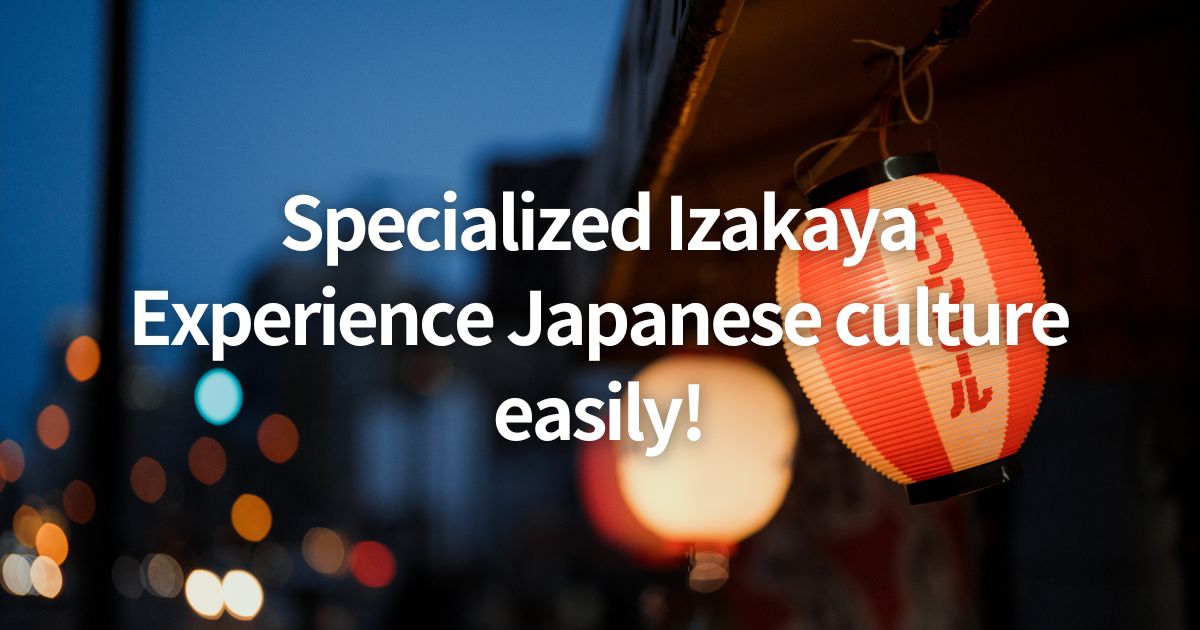Popular among foreigners visiting Japan as a place where they can get a glimpse of real life in Japan are the popular izakaya (Japanese style pubs) in the city.
Recently, the name “izakaya” is gradually gaining recognition overseas as well,
Many of you may be thinking, “If I have come all the way to Japan, I want to experience the real izakaya!
Many of you may be thinking so.
In this issue, we will introduce some of the most popular izakaya, while giving an overview of the main attractions of izakaya.
We hope you will find this information useful if you are having trouble choosing an izakaya.
What is izakaya, a globally recognized “izakaya”?
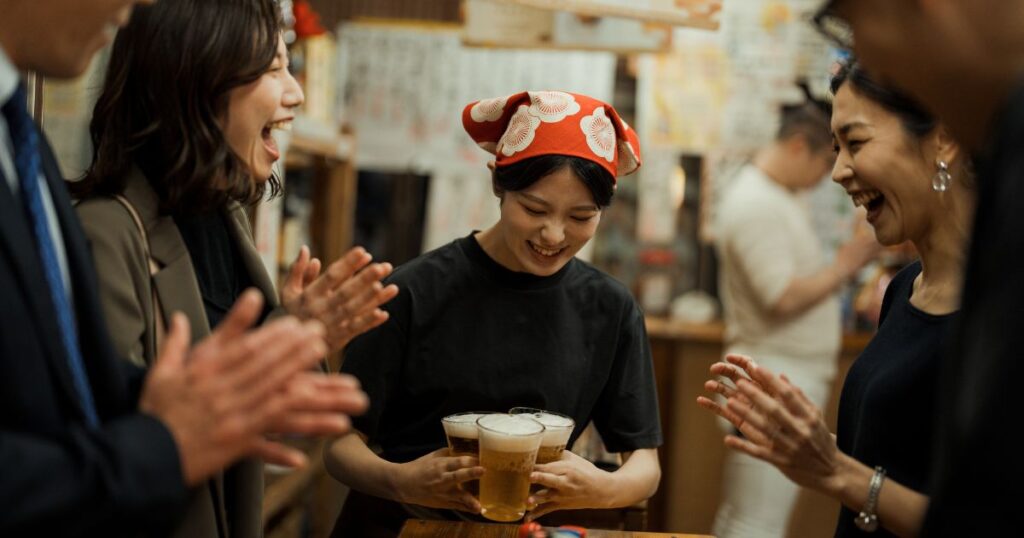

Popular izakaya is a popular eating and drinking establishment that symbolizes Japanese food culture.
They offer a wide variety of alcoholic beverages such as sake, shochu, and beer at reasonable prices, as well as a wide variety of “snacks” (side dishes to accompany alcoholic drinks).
The menu features mainly Japanese dishes such as sashimi, yakitori, tempura, and cold tofu (cold tofu), as well as a wide variety of popular dishes such as gyoza and fried tofu.
The restaurant is characterized by a lively and bustling atmosphere, with counter seats, a small tatami room, and table seating.
As symbolized by the phrase “beer for now,” it is a popular place for office workers and friends to casually drop by after work.
They also play an important role as a place for communication, and have taken root in the lives of Japanese people as a place for socializing with colleagues and talking with friends.
In recent years, they have also become popular among foreign tourists, attracting attention as a place to experience Japanese food culture and socializing.
Origin and Roots of Izakaya
The origin of “Izakaya” dates back to the Edo period (1603-1868).
It originally started as a standing bar called “izakaya,” which not only served sake but also simple food.
The word “ia” means “to sit down,” and “izakaya” means “liquor store,” meaning a place where one can sit down and enjoy sake.
From the Meiji era onward, izakaya developed as a place for the common people to relax, forming the prototype for today’s “popular izakaya” (Japanese style pub).
It is true that if you want to experience Japanese culture up close and personal, drinking a little at an izakaya may be a good idea, as the alcohol will make you less cautious.
Three Attractions of Izakaya
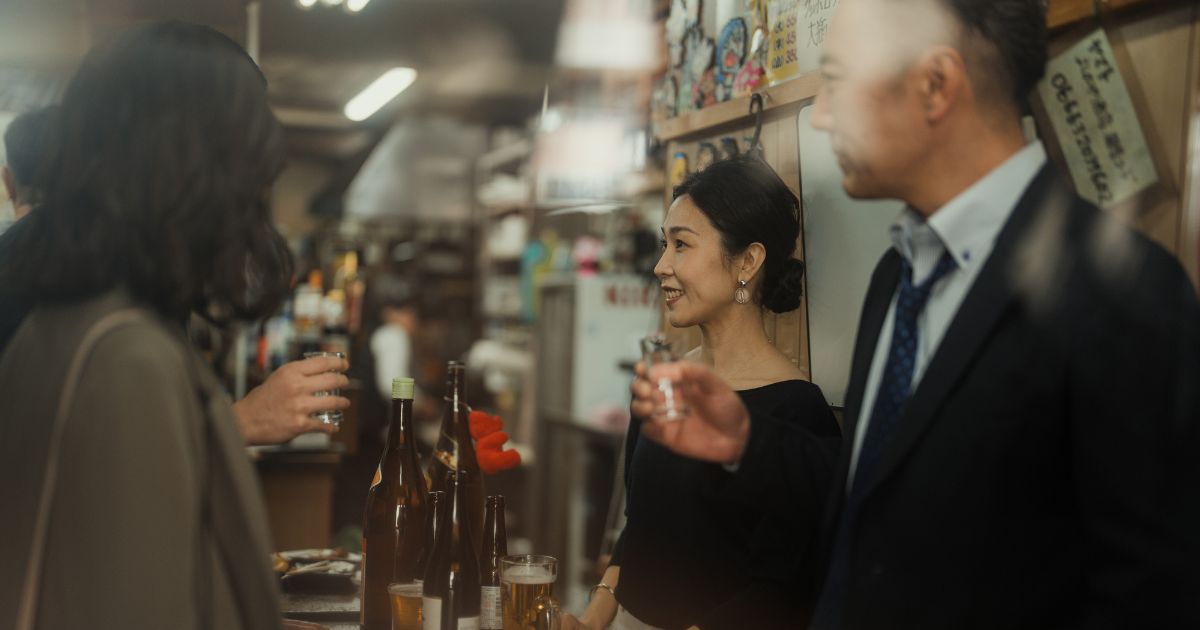

I have summarized some of the attractions of izakaya that I find attractive.
The experience of enjoying a wide variety of Japanese food and drinks in one place
The greatest appeal of a pop-up izakaya is the ability to sample a wide variety of Japanese food in small portions in a single location.
The menu offers a wide variety of traditional and creative Japanese dishes such as sashimi, yakitori, tempura, chilled tofu, edamame, and more.
You can also enjoy a variety of Japanese alcoholic beverages such as sake, shochu, and draft beer with your meal.
In particular, the “omakase course” and “all-you-can-drink/all-you-can-eat plan” are great opportunities for Japanese food novices to efficiently sample a variety of dishes.
Many izakaya also offer English menus and menus with pictures, which are popular among foreign tourists because they allow them to order without feeling a language barrier.
Authentic Japanese culture and social experience
Izakaya is not just a restaurant, but a cultural space that is the center of Japanese social life.
The shouts of “Beer for starters! and lively “Irasshaimase! and the lively “irasshaimase!” greetings, and the sharing of meals around the table, you can experience firsthand the unique Japanese eating and drinking culture.
At the counter, you can also enjoy conversation with the chef and mingle with the locals seated next to you.
The atmosphere of izakaya, which has been a favorite place for Japanese people to deepen friendship with colleagues and friends, provides travelers with a valuable glimpse into daily life in Japan.
Cost-effectiveness and convenience
One of the attractions of a popular izakaya is the ability to enjoy high quality food and drinks at reasonable prices.
Especially on weekdays, “happy hours” and “set prices” allow you to enjoy a highly satisfying dining experience while keeping your budget in check.
Another attraction is the easy accessibility of the restaurant, which can be found anywhere in Japan, from the downtown areas of large cities to small towns in rural areas.
They are also open long hours, from evening until late at night, making them ideal for dinner after a long day of sightseeing or as a leisure activity in the evening.
Furthermore, many izakayas offer private or semi-private spaces, providing a comfortable environment for groups.
My friend who is coming back from overseas also wants to go to Isomaru Suisan! They say, “I want to go to Isomaru Suisan.
I wonder if this is the reason…
Recommended okonomiyaki restaurants
Here are some izakaya restaurants I recommend, both national chain restaurants and independent stores.
Chain restaurants
One-man store
Chain restaurants
Isomaru Suisan
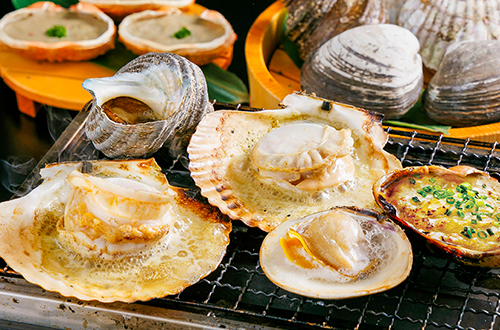

✅ Recommended Points
- Hamayaki Experience: A unique feature of this restaurant is the “Hamayaki style” of grilling fresh seafood by yourself on a tabletop stove. This is a highly entertaining experience that can be enjoyed like a barbecue.
- A uniquely Japanese atmosphere: The restaurant’s interior is reminiscent of a beach house, and the Taikyo flag and staff dressed in jinbei (traditional Japanese informal kimono) give the restaurant a uniquely Japanese cultural feel.
- Reasonable prices and a wide variety of menu items: About 80 different types of sushi and donburi (rice bowls), mainly seafood, can be enjoyed at reasonable prices.
- Open 24 hours a day, 7 days a week: convenient for tourists to use anytime.
Kushikatsu Tanaka


✅ Recommended Points
- Osaka’s specialty kushikatsu: Osaka’s B-class gourmet “kushikatsu” can be easily enjoyed in Tokyo. Although deep-fried, the light texture and lack of oiliness are well-received.
- Entertainment elements: Unique experiences such as mixing your own potato salad or playing a dice game for a free highball.
- Homey, lively atmosphere: The yatai-style décor and bright interior allow customers to experience Japanese folk culture.
- Reasonably priced: The reasonable price of 100 to 200 yen per skewer is also attractive.
Ginji the Connoisseur
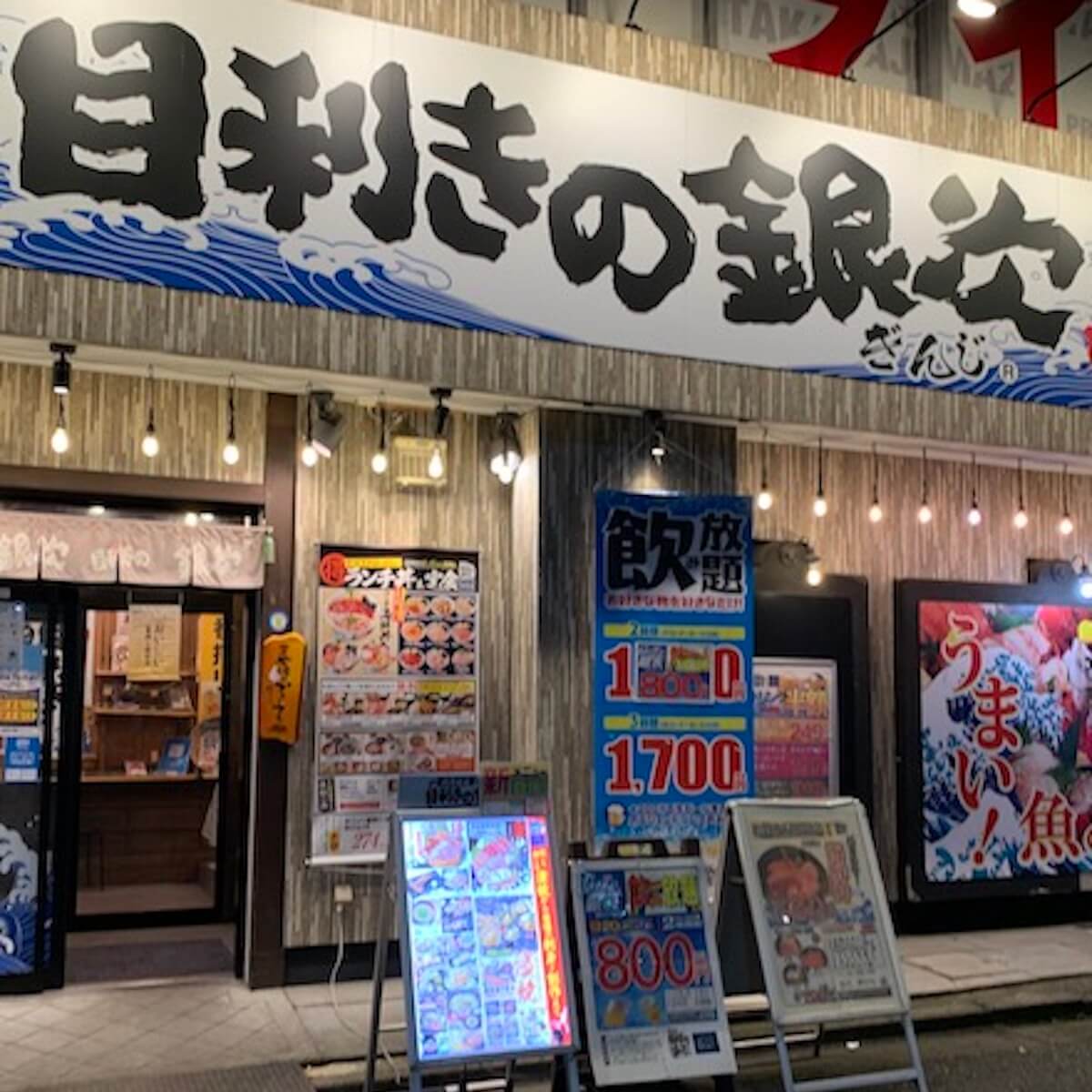

✅ Recommended Points
- Hamayaki experience: “Hamayaki,” in which you grill shellfish and seafood yourself on a tabletop, is popular. A wide variety of seafood is available, such as crab miso kora yaki (grilled crab in a miso shell) and pickled scallop yaki (grilled scallop).
- Atmosphere: The restaurant is designed to reproduce a Japanese beach house, giving tourists a sense of “Japaneseness.
- Multilingual: English menus are available, and the restaurant has approximately 200 outlets mainly in urban areas.
Izakaya Doma Doma
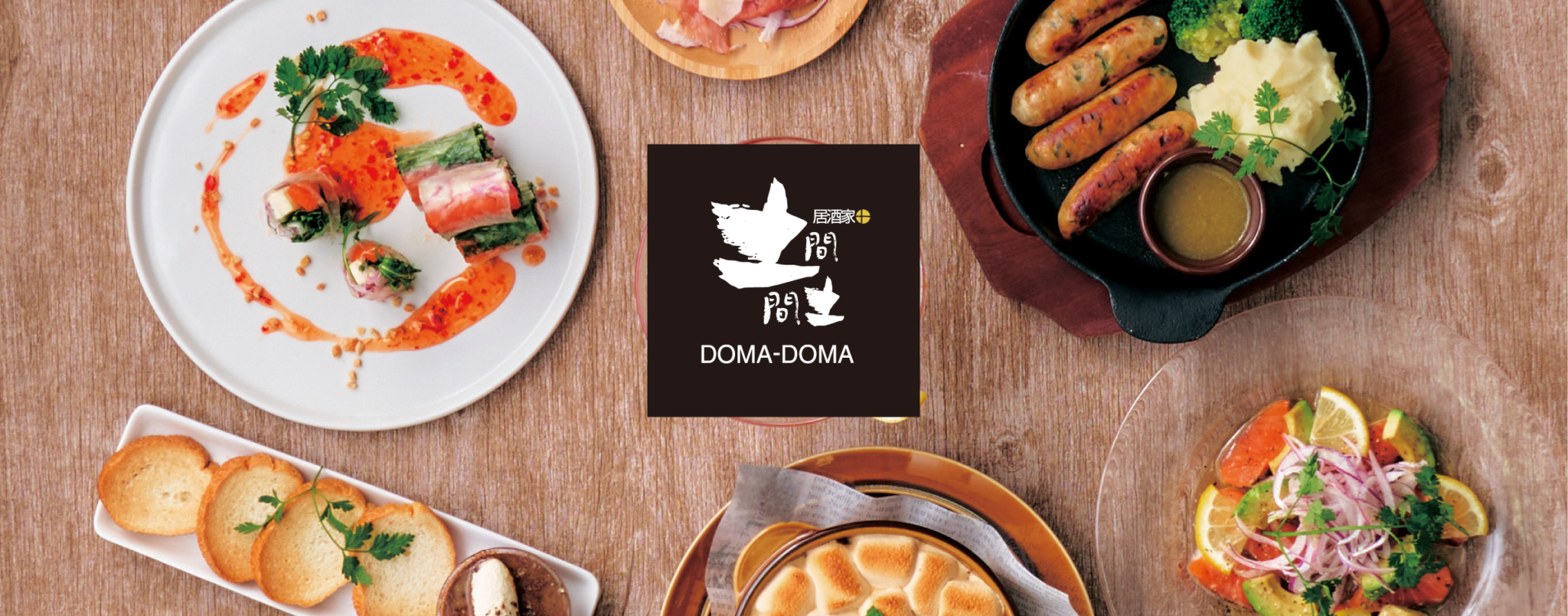

✅ Recommended Points
- Traditional space: The interior design is inspired by the “Doma” (earthen floor) of an old private house, allowing customers to experience the traditional Japanese culture of entertaining in a traditional setting.
- Variety of menu: In addition to deep-fried and skewered dishes, the restaurant features dishes with an international flavor, such as pizza with naan.
- Multilingual: English and Chinese menus are available, and some restaurants have English-speaking staff.
The beauty of izakaya chains is that they are easy to use because they are often located in relatively large numbers and in good locations near train stations.
One-man store
Yakiton Maruwa


✅ Recommended Points
- The owner is very particular about his yakitori:The owner trained at the popular Nishiguchi Yakiton in Asakusabashi before going independent. The restaurant offers more than 20 kinds of skewers, mainly of motsuyaki.
- Experience-style eating and drinking:The first floor is for standing drinking, and the second and third floors are for seating, making it possible to casually experience Japan’s “standing drinking culture.
- Popular menu:The “Sara Nankotsu” (soy sauce-based stew) is the standard. Drinks are available in small to large sizes, and senbero (cheap sake) is available.
Iwao


✅ Recommended Points
- A hideaway space:Renovated from a 70-year-old old house with blackboard exterior. The dark lighting creates an atmosphere for adults.
- Innovation of Japanese cuisine:The restaurant’s main focus is on creative cuisine using fresh fish. The “Miyazaki Ozaki Beef Roast Beef” is made from a rare Japanese beef.
- International cuisine:No English menu, but the chef’s performance makes up for the language barrier.
Akabei


✅ Recommended Points
- A treasure trove of sake:The owner carefully selects local sake from breweries throughout Japan and always has more than 20 varieties on hand. Sake pairings available.
- Taste of a long-established restaurant:An affiliate of “Mimasuya,” which was established in 1905. The large dishes are very reasonably priced.
- Atmosphere:Located on the second floor of a back alley, the restaurant is like a hideout. Semi-private tatami room for calm conversation.
I’m currently living in Tokyo, so this is mainly about Tokyo, but if you like, please refer to this page.
Three ways to enjoy izakaya for foreign visitors to Japan


To enjoy izakaya to its fullest, try these tips:
✅ Diverse sake and local food pairing experience
At izakaya, you can enjoy a variety of sake, shochu, local beer, and other alcoholic beverages paired with dishes using seasonal and local ingredients.
For example, “sashimi x cold sake,” “grilled skewers x draft beer,” or “motsu nabe x potato shochu” – exploring flavor combinations is a real pleasure.
At restaurants with English menus and explanations with pictures, even foreigners can order with confidence.
The opportunity to see artisanal cooking performances up close is another valuable opportunity to experience food culture.
✅ Order-to-share style of interaction
The restaurant features an “order->share teppan/counter->conversation” flow. The style of ordering a la carte dishes one after another and sharing them with everyone at the table is a mechanism that naturally generates conversation.
Foreigners can expect to interact with local customers by asking the waiter for “recommendations” and toasting with the customers seated next to them.
The custom of “Kampai” (toast) is especially popular as a symbolic moment of cross-cultural experience.
✅ Cultural Discovery in an Unusual Space
The “Japanese night” atmosphere created by the soft lighting of lanterns and wooden interior is also a popular photo spot for social networking.
Some restaurants require customers to take off their shoes for seating, allowing them to experience traditional space design such as tatami mats and sunken kotatsu seats.
Learning about local culture through the menu (e.g., the history of Hiroshima-style okonomiyaki) and seasonal menu items (e.g., cherry shrimp tempura) will deepen your travel memories.
It is an extraordinary cultural experience that will leave a deeper impression on you.
You can easily enjoy the feeling of an izakaya in your own home!
This time, we would like to introduce you to some wonderful items that will make you feel as if you are having a drink at a Japanese izakaya even when you are abroad.
You can enjoy the taste of traditional Mino ware or appreciate it as a work of art.
We hope you will use them as a reference for your souvenir selection.
Finally, here is a brief introduction on how to make a delicious hot sake.
Tips on how to make hot sake
- Use the hot water boiling method The hot water boiling method is the best way to bring out the best flavor of sake. Place the sake in a tokkuri, turn off the boiling water, and let it soak. The recommended time for lukewarm sake is about 2.5 minutes, and for hot sake about 3 minutes.
- Temperature Control The ideal temperature is 45°C to 50°C. The ideal temperature is between 45°C and 50°C (45°F and 50°F), and the temperature should be slightly hot to the touch on the bottom of the bottle. A thermometer can be used for more accurate adjustment.
- Ceramic sake cups are recommended because they do not easily cool down and retain the aroma. Microwave ovens are also convenient, but the hot water boiling method brings out the best flavor.
is good, please try it!
If you are interested, check out the following products on Amazon!








You can easily enjoy authentic okonomiyaki at home.
We hope you will give it a try.

